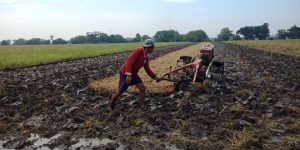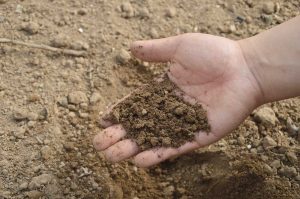Managing soil effectively plays a crucial role in achieving maximum agricultural yields, as soil serves as the foundation for plant growth and overall farm productivity.
Healthy and well-maintained soil not only provides essential nutrients for crops but also improves water retention, enhances root development, and supports beneficial microorganisms that contribute to a thriving ecosystem.
Farmers and agricultural practitioners must pay close attention to various factors, such as soil composition, fertility, and structure, while also considering environmental conditions that influence its performance.
Sustainable soil management practices are vital to ensuring long-term productivity and preventing degradation, making it a key element in successful agricultural planning and execution.
Read Also : What is a Soil Amendment? Types, Benefits and Methods of Applying
Here Are Tips for Managing Soil to Maximize Agricultural Yields

Here are some effective tips for managing soil to maximize agricultural yields that can be applied sustainably to support land productivity:
1. Conduct regular soil quality analysis
Regular assessments of soil quality are an important first step in determining land management strategies. This analysis helps identify nutrient content, texture, and soil acidity levels, allowing adjustments to be made according to crop needs.
Data from soil analysis serves as a reference in determining the right type of fertilizer and management methods, leading to more optimal agricultural results. Through this approach, the risk of nutrient deficiency or excess can be minimized from the start.
Soil quality assessments also help detect issues such as the presence of heavy metals or toxins that may affect crop productivity.
The results of the analysis make it easier to plan crop patterns that suit land conditions, thereby improving farming success. Management based on scientific data allows for more efficient use of resources. Regular monitoring ensures that soil remains healthy and productive in the long term.
2. Use organic fertilizers consistently
Organic fertilizers play a crucial role in improving soil structure while naturally adding nutrients. Organic materials from compost, manure, or plant residues enhance the soil’s ability to retain water and provide essential nutrients for plants.
Regular use of organic fertilizers helps maintain soil fertility, allowing crops to grow healthier and more productive. Another positive impact is the increased population of beneficial microorganisms in the soil.
The organic content in fertilizers helps create a balanced soil ecosystem, ultimately reducing dependency on chemical fertilizers. Organic fertilizers also reduce the risk of environmental damage caused by chemical residues.
Soil managed with organic materials has better resistance to erosion and drought. With consistent fertilization, agricultural land can maintain its productivity in the long run.
3. Apply annual crop rotation systems
Rotating crops each planting season is an effective way to maintain soil nutrient balance. Crop rotation helps prevent the buildup of pests and diseases that typically attack certain plant types.
Each plant species has different needs and impacts on the soil, giving the land recovery time when rotated. With this system, soil fertility can be maintained without excessive intervention.
Implementing crop rotation also improves long-term productivity. Fields planted with varied patterns are better able to maintain biodiversity and minimize damage to the soil ecosystem.
Rotation allows for natural pest control without reliance on chemicals. This strategy is highly effective for both small- and large-scale farming to support maximum harvests.
4. Improve soil structure with natural compost
Natural compost plays a key role in enhancing soil porosity, making it easier for plant roots to absorb nutrients and water.
Good soil structure allows for proper air circulation, supporting healthier root growth. Compost helps improve the texture of hard or sandy soils, making them more suitable for cultivation. Using compost also provides additional nutrients that benefit plants.
The decomposition of organic materials in compost increases humus content, making the soil more fertile and resilient to extreme weather changes. Soil with improved structure from compost has better water retention, reducing irrigation needs.
Regular compost application enriches soil microorganisms, creating an ecosystem that supports plant productivity. With structural improvements, farmland becomes better prepared for various types of agricultural cultivation.
5. Control erosion using cover crops
Cover crops help protect the soil from erosion caused by heavy rains or strong winds. Their roots hold soil particles in place, preventing them from being washed away while also improving fertility by adding organic matter.
Planting cover vegetation also shields the soil surface from direct sunlight exposure. This protection reduces excessive water evaporation during the dry season.
In addition to preventing erosion, cover crops can provide natural nitrogen if legumes are used. Their growth also suppresses weed development that may interfere with main crops.
Choosing the right cover crops supports sustainable soil management and reduces land maintenance costs. In this way, soil productivity can be preserved even under extreme environmental challenges.
6. Manage soil pH according to crop needs
Soil pH affects a plant’s ability to absorb nutrients effectively. Soil that is too acidic or alkaline can hinder growth and reduce productivity.
Regular pH measurements allow for adjustments using dolomite lime or acidifying agents as needed. Managing pH helps maintain chemical balance in the soil so nutrients remain available.
Plants grown in soil with optimal pH are more resistant to diseases and able to grow well. Proper soil pH management also extends land productivity and minimizes the need for excessive fertilizer.
Adjustments should be made gradually to avoid disrupting the soil ecosystem. With continuous monitoring, farmland quality can be maintained for a wide variety of crops.
7. Use efficient irrigation systems
Proper irrigation helps maintain soil moisture without causing waterlogging that can damage crops. Modern systems like drip or sprinkler irrigation allow for more efficient and targeted water use.
Proper timing and water volume improve absorption by plants and reduce the risk of drought. Maintaining adequate moisture also supports the activity of beneficial microorganisms in the soil.
Efficient water use also promotes environmental sustainability by avoiding resource waste. Soil that receives evenly distributed water has a more stable structure, reducing the likelihood of cracking or hardening.
Good irrigation systems also enable farmers to adjust planting patterns according to the season. With proper management, farmland can remain productive year-round despite climate changes.
8. Avoid excessive pesticide use
Overusing pesticides can disrupt soil ecosystems by killing beneficial microorganisms. Pest control should be integrated, using biological or mechanical methods.
This approach reduces dependency on harmful chemicals that can degrade soil fertility. The presence of natural organisms such as pest predators becomes an essential support for agricultural ecosystems.
Reducing pesticide use also has positive impacts on soil health and produces safer crops for consumption. Farmland managed in an environmentally friendly manner is more resistant to long-term pest disturbances.
This strategy also lowers operational costs while preserving the surrounding environment. With the right approach, soil remains fertile and farming outcomes become more sustainable.
9. Utilize modern agricultural technology
Digital technology helps monitor soil conditions in real-time using sensors or data-based applications. This information simplifies decision-making regarding fertilization, irrigation, and pest control.
Using modern tools speeds up fieldwork and reduces the risk of human error. Soil management becomes more precise and efficient with technological support.
Innovations like drones or automation devices increase the effectiveness of land management. Technology also allows for long-term planning based on historical data and weather forecasts.
Using these systems supports sustainable farming by optimizing available resources. With modern approaches, agricultural yields can increase without compromising soil health.
10. Apply balanced fertilization according to recommendations
Fertilization based on soil analysis recommendations helps prevent nutrient deficiencies or excesses. Proper dosage maintains nutrient balance and enhances crop productivity.
Balanced fertilization also reduces the risk of environmental pollution. This approach ensures soil remains healthy and fertile over the long term.
Providing nutrients according to crop needs helps plants achieve optimal growth without negatively impacting the soil. Planned fertilization improves soil fertility sustainably. This practice also supports cost efficiency by avoiding excessive fertilizer use. With good management, fertilization becomes a key factor in maintaining land productivity.
Thorough planning and the application of various soil management methods will result in productive land for the long term.
The balance between modern techniques and natural approaches is the key to maintaining fertility. Land sustainability can be preserved if management is carried out carefully with a strong focus on the health of the soil ecosystem.
Read Also : How to Improve and Maintain Soil Fertility






